Create a list of articles to read later. You will be able to access your list from any article in Discover.
You don't have any saved articles.

The iconic Diplodocus cast has begun its long journey back to Britain, after nine months in Canada.
It has been kitted out with a new mount in preparation for a three-year UK tour.
The dinosaur now has a specially made frame to support it while it travels to eight UK locations, as well as some new front 'hands'.
The tour will start at Dorset County Museum in 2018 and end at Norwich Cathedral in 2020.
Dippy was dismantled and removed from the Museum's Hintze Hall on 5 January 2017. The conservation team spent just over three weeks working with engineers to take the skeleton cast apart.
Scaffolding and special lifting equipment were used to carefully remove each bone, which were then inspected, labelled and cleaned.
But the bones, made from plaster and resin, needed more than a clean. It was decided that a new mount and base would allow engineers to quickly and easily dismantle and reassemble the dinosaur skeleton at each tour venue.
The company chosen to carry out this complex engineering challenge is based in Canada, so Dippy was shipped there in 13 custom-designed crates.

Dippy being deinstalled from Hintze Hall
Lorraine Cornish, Museum Head of Conservation, says, 'We knew Dippy would be in safe hands. The company chosen to carry out the work had previously worked on the Berlin Diplodocus skeleton, as well our own blue whale skeleton.
'Some of the bigger vertebrae needed extra resin to strengthen them, and metal rods were added to some ribs to protect them from damage.
'The new mount has been specially designed to carefully fit around each bone.'
Dippy first went on display at the Museum in 1905. The dinosaur is a cast of the type specimen of Diplodocus carnegii, found in America.
There are nine other similar casts from the same dinosaur around the world, but Dippy was the first to be made, and the first on public display.
Dippy was originally housed in the Reptile Gallery (now Human Biology), because it was too big for the Fossil Reptile Gallery (now Creepy Crawlies).
In 1979, the Diplodocus made the move to Hintze Hall, where it remained until 2017.
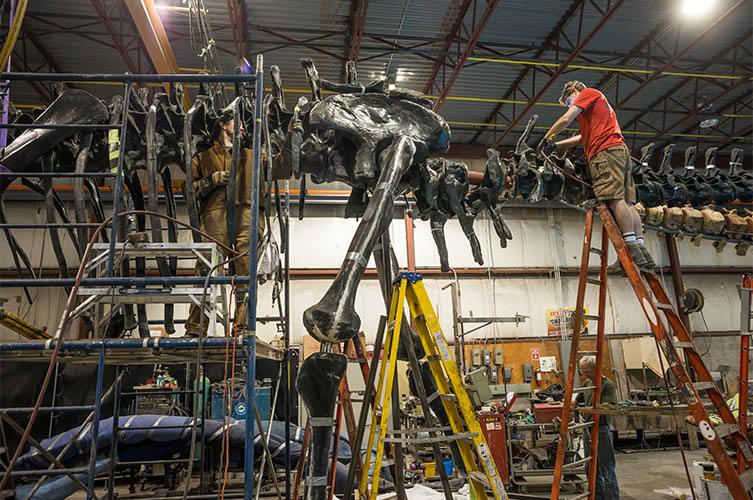
Engineers examine Dippy's frame
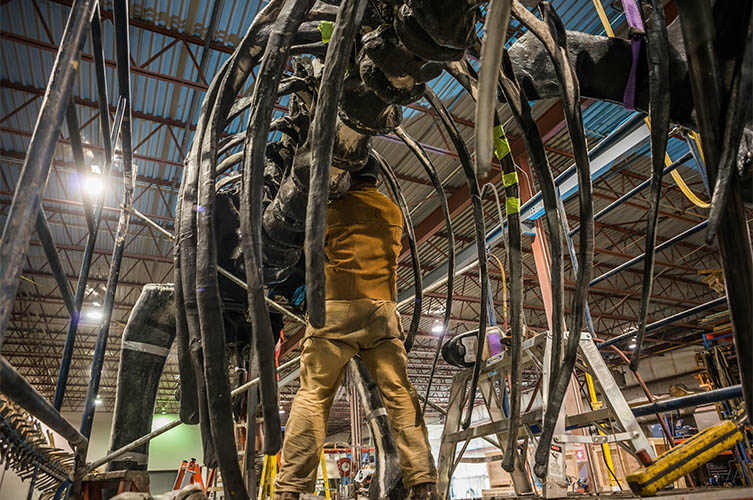
Engineers examine Dippy's frame
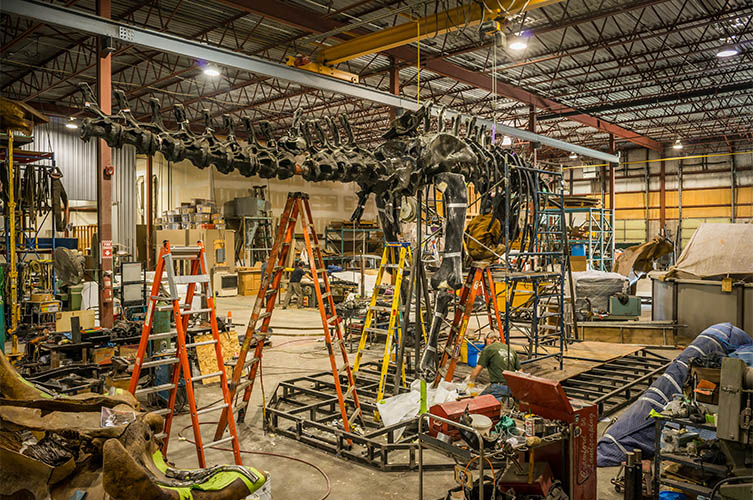
The skeleton inside its temporary Canadian home
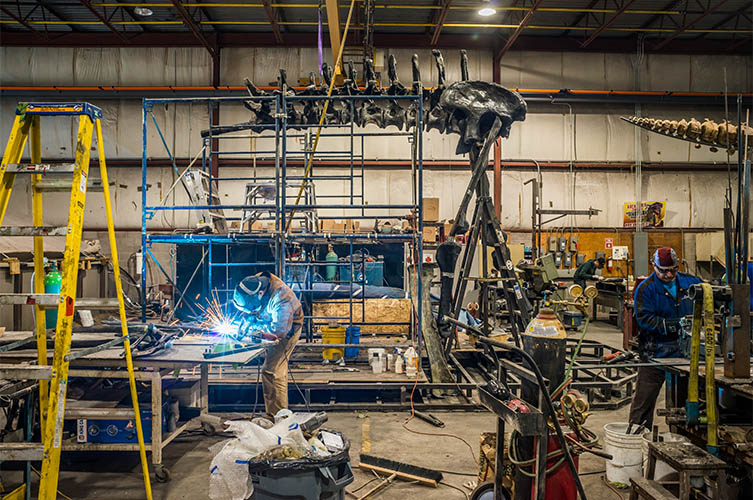
The skeleton inside its temporary Canadian home
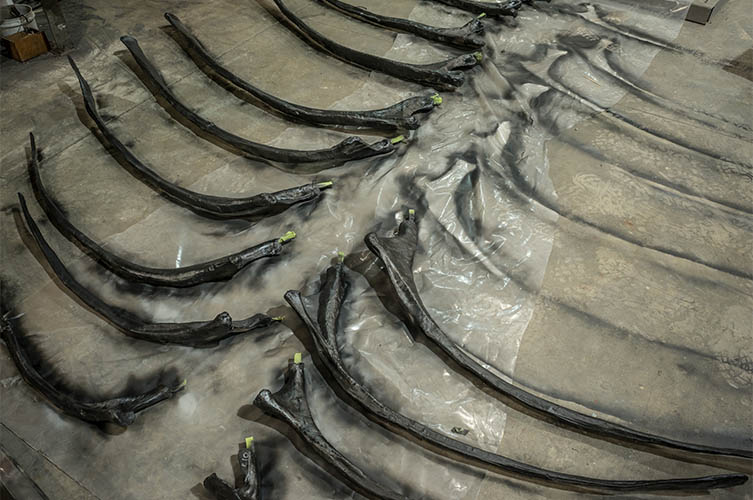
A selection of Dippy's bones
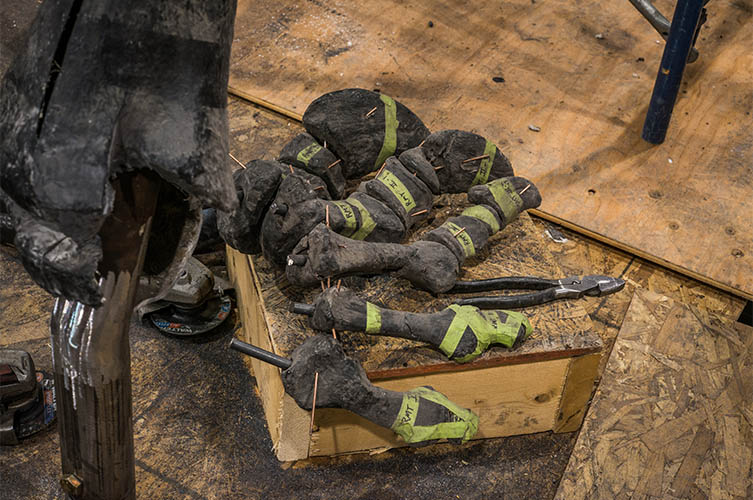
Dippy's feet being worked on
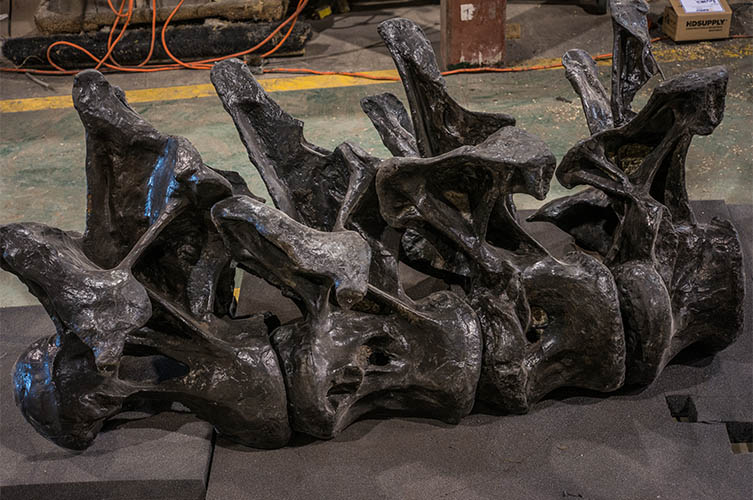
Dippy will be dismantled and resassembled several times over the next three years
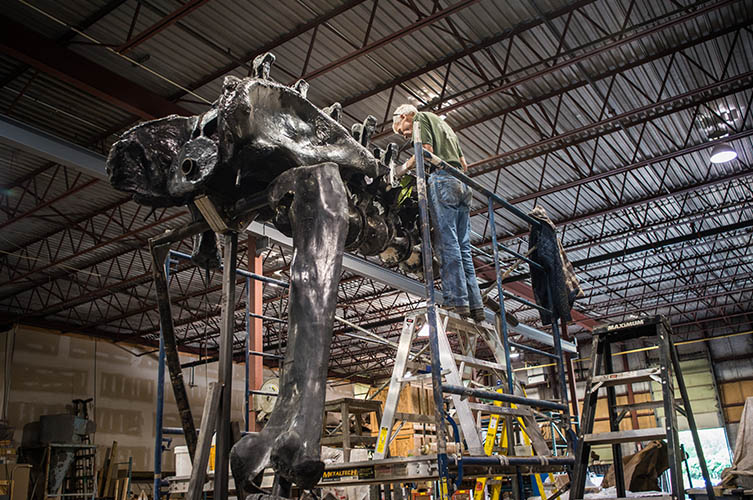
The skeleton's new frame will support the dinosaur as it travels
Museum scientists have known for some time that Dippy's front 'hands' were not anatomically correct - they were in fact back feet.
During the skeleton's time in Canada, staff took the opportunity to rectify this, and new front hand casts were made from resin. The old originals remain in the Museum collection.
Lorraine says, 'With this tour, we had to strike a difficult balancing act between giving people the opportunity to see our ambassador, a historic object in its own right, and showing people an anatomically correct Diplodocus.
'The team felt that now was the right time to replace the front hands.'
Engineers also had to rethink how Dippy's long neck and tail are supported. When the dinosaur was in the Museum, its heavy tail was supported by an arc of metal connected to the floor, and the neck by sets of cables hanging from the ceiling.
This structure would not have worked on tour, so the metal rods already inside both neck and tail had to be strengthened even further. The tail now holds itself up, and the neck has an additional upright support.

Dippy was the first Diplodocus carnegii cast to go on public display, in 1905
In October 2017, Lorraine paid a visit to Dippy in his temporary Canadian home, along with Museum technician Andy Wahl.
She says, 'We wanted to check progress and to see for ourselves how things were going. My focus was the condition of the cast and armature, and Andy wanted to further understand how everything fits together so that we are well prepared for the first installation in Dorset.
'The warehouse facility is amazingly large but also very secure. While we were there we saw progress on several blue whale projects plus some dinosaur preparation. Dippy looked very small in the huge space.'
Now that the work in Canada is complete, Dippy is packed back up into boxes and will be back in the UK in January.
It will take eight days to install the skeleton in the first tour venue, Dorset County Museum. The public will be able to see Dippy in Dorset from 10 February until 7 May 2018. Find out more about Dippy's tour.